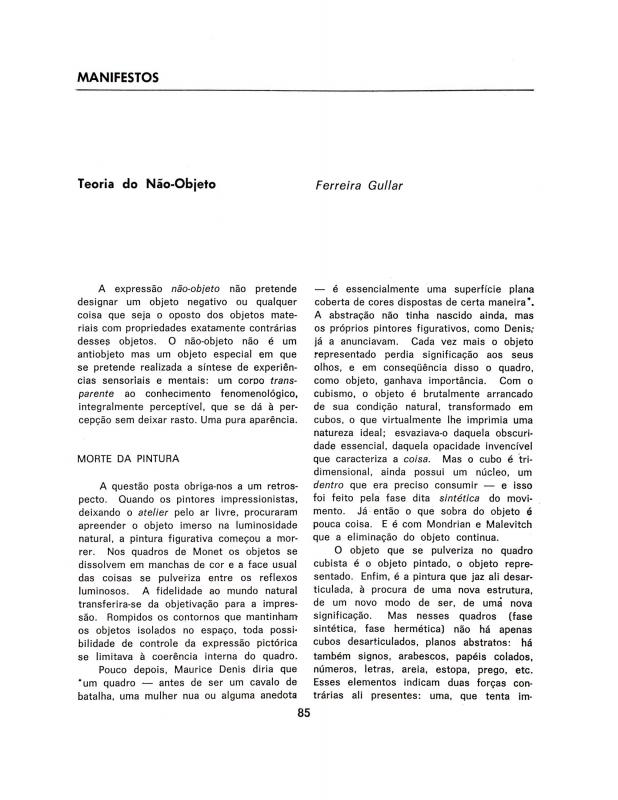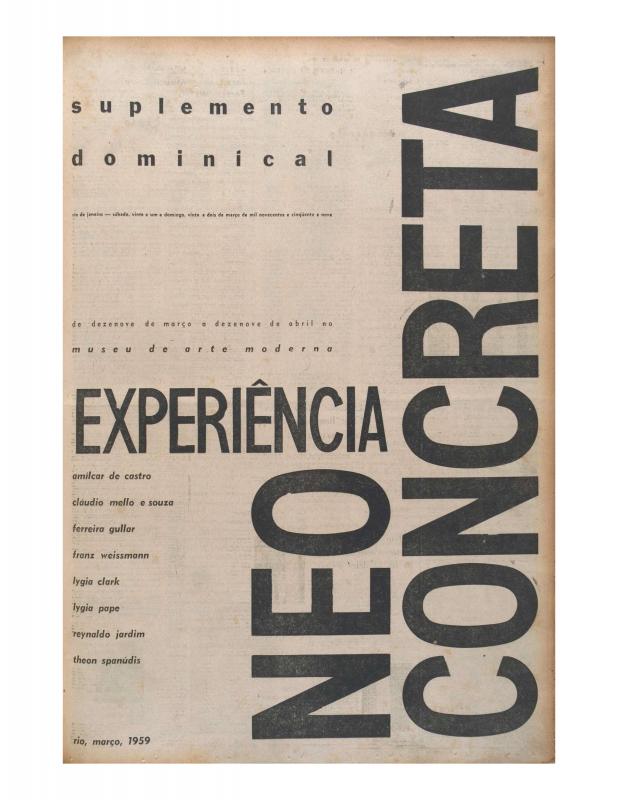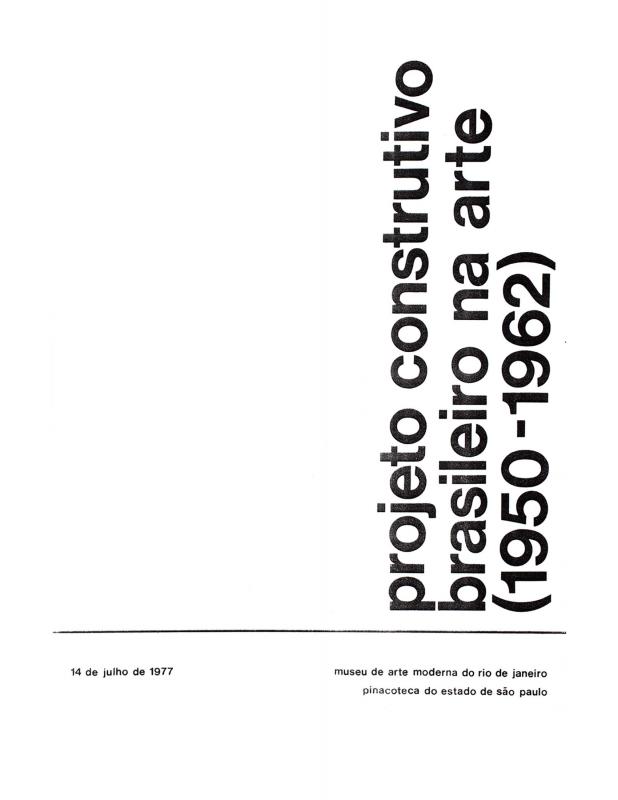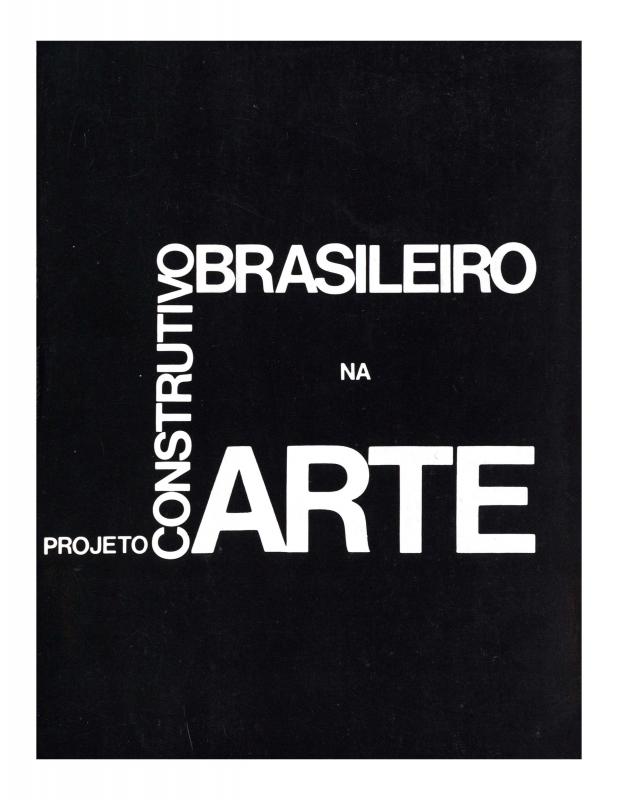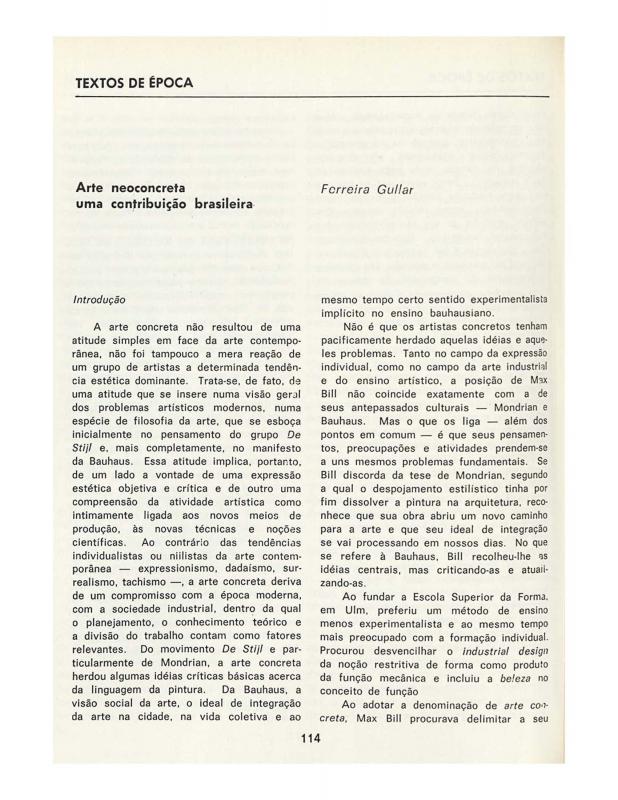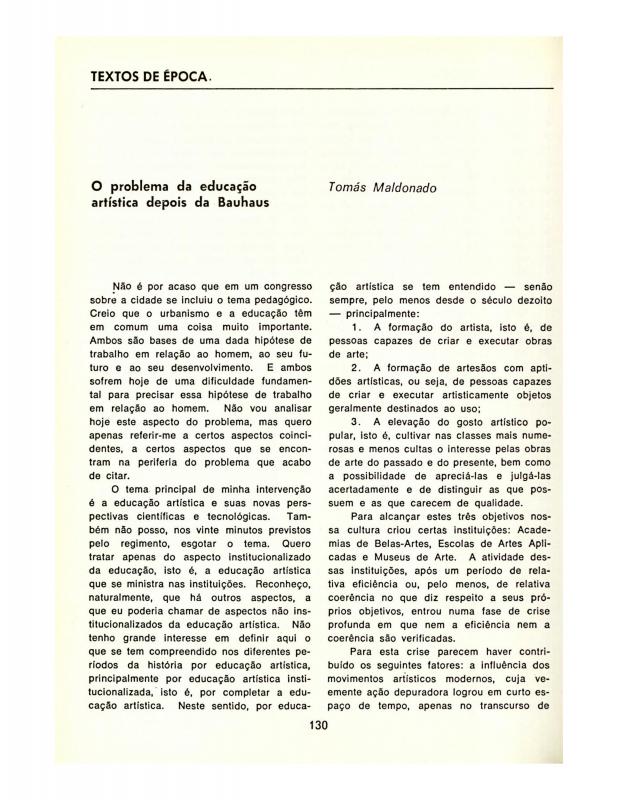As he mentions in his essay, the critic Ferreira Gullar (1930–2016) agreed with the Neo-Concrete group’s basic principles. After his essay “Teoría del No-objeto” [see the ICAA Digital Archive (doc. no. 1091374)] appeared in the Sunday Supplement of the Jornal do Brasil (December 19–20, 1959), he became the movement’s theorist. This essay was published (July 18, 1959) in the Rio de Janeiro newspaper where he was a regular contributor.
The author exploits the São Paulo group’s visibility in his title, “Arte Concreto,” although he does so in order to challenge the São Paulo art and poetry movement’s work, which he describes as a rational “mechanical” approach that avoids “being contaminated by experience” and is, in fact, “a purely mental kind of art.” He claims that these works explore “the eye’s geometrical possibilities” but “lack any transcendental significance.” The poet and theorist, who was born in Maranhão, states that the goal of Neo-Concrete art is “to encourage the expressiveness of Concrete art’s geometric vocabulary.” What Ferreira Gullar’s essay fails to explain is that, in the “Manifiesto Neoconcreto” (doc. no. 1110328), written just a few months earlier, the idea of expressiveness is buttressed by a word that is utterly devoid of any sensory meaning: “transcendental,” which was repeated some six times in the manifesto. It is, furthermore, difficult to understand why the name “Neo-Concrete” is used for a movement intent on annihilating all of Concrete art’s principles. Prefixes such as “anti,” “non,” and so on would be more appropriate for this kind of theoretical-practical objective. Using “neo” in the name of a movement that seeks the total destruction of the rational enemy is simply absurd.
This text appeared in Projeto Construtivo Brasileiro na Arte, the catalogue for the exhibition organized in São Paulo by Aracy Amaral (b. 1930) and Lygia Pape (1927–2004). The event was hugely influential in Brazil, prompting an innovative reading of the meaning of the rationalist movements in Brazilian art. The exhibition was presented in 1977 at the Pinacoteca do Estado de São Paulo and, later on, at the MAM-RJ (Museu de Arte Moderna do Rio de Janeiro).
[For more information about this exhibition, see the following in the ICAA Digital Archive: “Projeto construtivo brasileiro na arte,” by Lygia Pape (doc. no. 1110680); “A arquitetura é a grande arte de nosso tempo —1948: Romero Brest em São Paulo” (doc. no. 1314972) by
Jorge Romero Brest; “Arte neoconcreta, uma contribuição brasileira” by Ferreira Gullar (doc. no. 1315052); and “O problema da educação artística depois da Bauhaus” (doc. no. 1315069) by Tomás Maldonado.]

